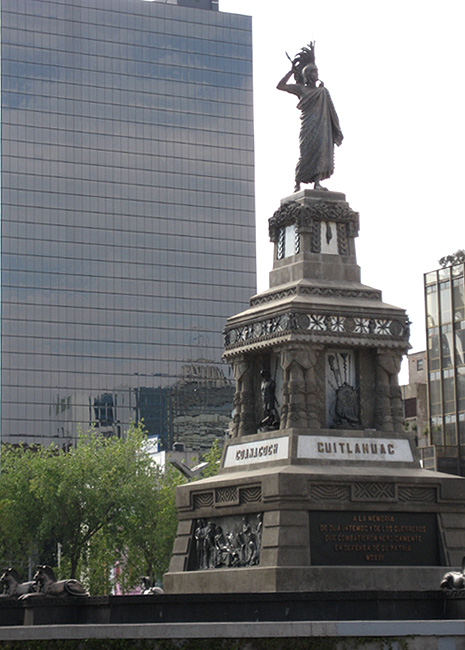
México City (15) |
 |
|---|
Source: WTL photo© on site in Mexico City, 2008. Image: A monument dedicated to Cuitláhuac on the Paseo de la Reforma, which is a boulevard lined with majestic trees and interrupted by several traffic circles with major monuments in the center of them. This is one example of such a monument. Comments: Cuitláhuac (1476 – 1520; or Cuitlahuatzin) was the 10th tlatoani (emperor) of Tenochtitlan. He ruled for only 80 days during the Spanish destruction of his city and his empire because he contracted smallpox from the invading Europeans. His father was Axayácatl and his older brother was Moctezuma II, the ruler generally (and mistakenly) considered, the last emperor of the Aztecs. After Pedro de Alvarado massacred the nobles at the Templo Mayor, the major battle for Tenochtitlan began. Moctezuma told Cortés to free Cuitláhuac so that he could try to talk his compatriots into cease fighting. Cortés freed Cuitlahuac, who, rather than convince his people to stop fighting, instead led the fight against the Conquistadores. Moctezuma was killed stones thrown by his own people, but Cuitláhuac was able to rally the Aztec warriors and drive the remnant of the Spanish army out of Tenochtitlan (June 30, 1520). After Cuitlahuac died, Cuauhtémoc became the next tlatoani, and the last emperor of the Aztecs. Humanities topic: Please reflect on the juxtaposition of this monument to Cuitláhuac in the context of the Paseo de la Reforma, some of which you can see in the background. How relative are the notions of foreground and background as you consider the content of this image? |
|---|